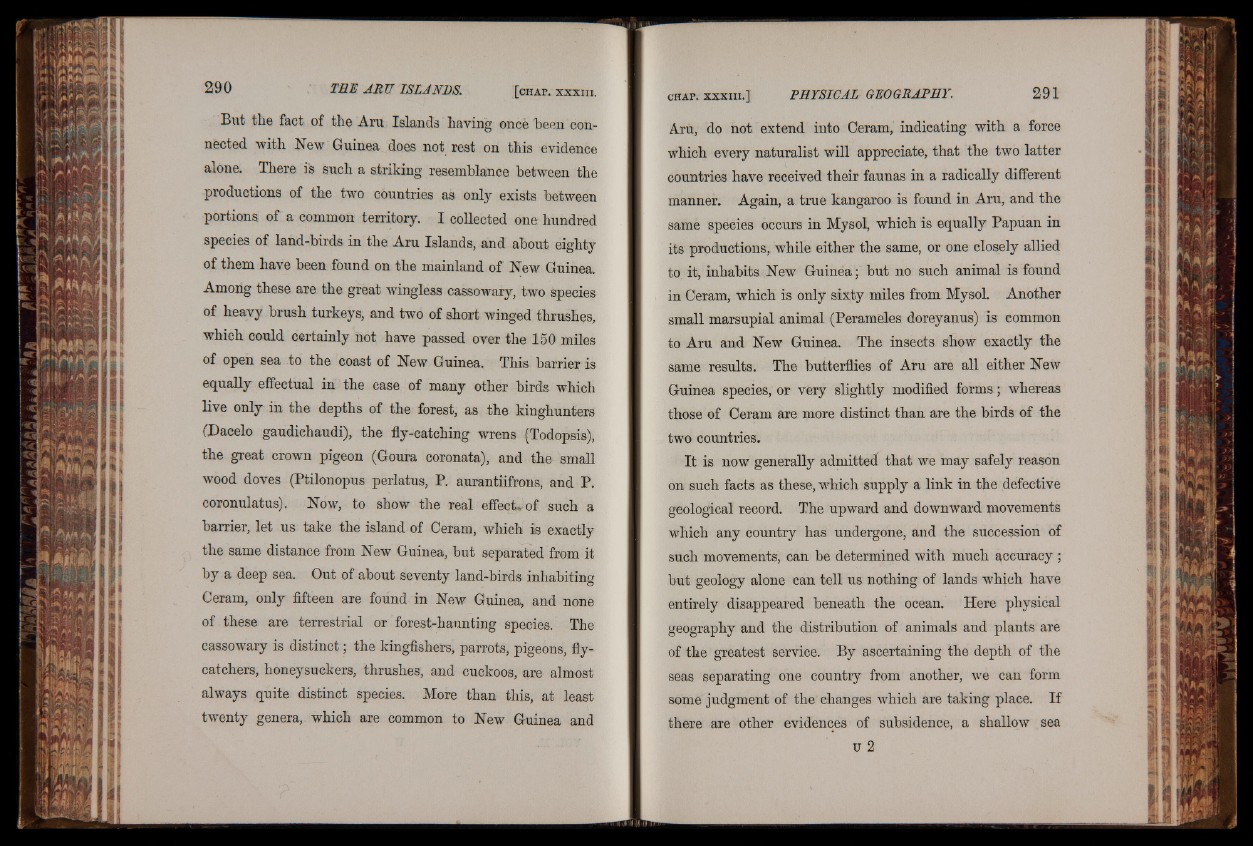
But the fact of the Aru Islands having once been connected
with Hew Guinea does not rest on this evidence
alone. There is such a striking resemblance between the
productions of the two countries as only exists between
portions of a common territory. I collected one hundred
species of land-birds in the Aru Islands, and about eighty
of them have been found on the mainland of Hew Guinea.
Among these are the great wingless cassowary, two species
of heavy brush turkeys, and two of short winged thrushes,
which could certainly not have passed over the 150 miles
of open sea to the coast of Hew Guinea. This barrier is
equally effectual in the case of many other birds which
live only in the depths of the forest, as the kinghunters
(Dacelo gaudiehaudi), the fly-catching wrens (Todopsis),
the great crown pigeon (Goura coronata), and the small
wood doves (Ptilonopus perlatus, P. aurantiifrons, and P.
coronulatus). How, to show the real effect* of such a
barrier, let us take the island of Ceram, which is exactly
the same distance from Hew Guinea, but separated from it
by a deep sea. Out of about seventy land-birds inhabiting
Ceram, only fifteen are found in Hew Guinea, and none
of these are terrestrial or forest-haunting species. The
cassowary is distinct 3 the kingfishers, parrots, pigeons, flycatchers,
honeysuckers, thrushes, and cuckoos, are almost
always quite distinct species. More than this, at least
twenty genera, which are common to Hew Guinea and
Aru, do not extend into Ceram, indicating with a force
which every naturalist will appreciate, that the two latter
countries have received their faunas in a radically different
manner. Again, a true kangaroo is found in Aru, and the
same species occurs in Mysol, which is equally Papuan in
its productions, while either the same, or one closely allied
to it, inhabits Hew Guinea; but no such animal is found
in Ceram, which is only sixty miles from Mysol. Another
small marsupial animal (Perameles doreyanus) is common
to Aru and Hew Guinea. The. insects show exactly the
same results. The butterflies of Aru are all either Hew
Guinea species, or very slightly modified forms; whereas
those of Ceram are more distinct than are the birds of the
two countries.
It is now generally admitted that we may safely reason
on such facts as these, which supply a link in the defective
geological record. The upward and downward movements
which any country has undergone, and the succession of
such movements, can be determined with much accuracy;
but geology alone can tell us nothing of lands which have
entirely disappeared beneath the ocean. Here physical
geography and the distribution of animals and plants are
of the greatest service. By ascertaining the depth of the
seas separating one country from another, we can form
some judgment of the changes which are taking place. If
there are other evidences of subsidence, a shallow sea
U 2